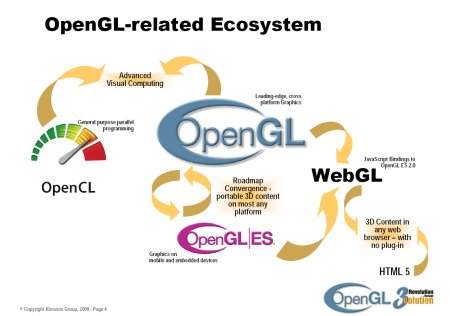San Francisco (CA) – The Khronos Group has announced additional details of its WebGL project. The initiative – first introduced at the Game Developers Conference in March 2009 – was launched to facilitate the hardware-based acceleration of 3D graphics in web pages without browser plug-ins.
A number of industry heavyweights have already joined the WebGL working group, including AMD, Ericsson, Google, Mozilla, Nvidia and Opera. Participants are currently working to define a JavaScript binding to OpenGL ES 2.0 that will enable rich 3D graphics within a browser on any platform supporting the OpenGL or OpenGL ES graphics standards.
“The Khronos Group is very excited to be spearheading this new initiative, and to have received such prominent industry support for enabling hardware-accelerated 3D on the Web,” Khronos spokesperson Jonathan Hirshon told TG Daily. “We intend to be very active over the next several months to reach our target deadline of early 2010 and welcome any and all companies and institutions to join the WebGL Working Group to contribute their expertise, code and ideas to this standard.”
According to Hirshon, the WebGL specification will utilize recent developments in web technology, such as the Canvas element defined as part of the HTML 5 specification.

Neil Trevett, president of the Khronos Group and VP at Nvidia, explained that the evolution of OpenGL ES and WebGL was helping to “push” new functionality in MID’s (mobile Internet devices).
“For example, the new iPhone 3GS offers advanced support for ES, which powers the 3GS user interface (UI). Developers are also using the specifications to accelerate flash-based apps, along with ported HTML rendering engines,” added Trevett.







